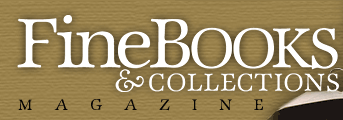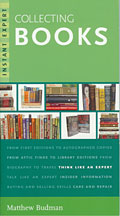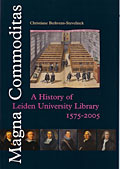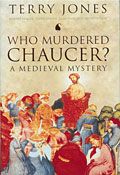| |
 |
 |
 |
There are more changes to the eighth edition of
ABC than in all previous editions combined
ABC for Book Collectors
Eighth Edition
By John Carter and Nicholas Barker
New Castle, DE:
Oak Knoll Press, 2004. $29.95, 232 pp.
ISBN 1-58456-112-2
ABC for Book Collectors is the standard
primer and glossary for book collecting in the English-speaking
world. It enumerates the terminology used, commonly and uncommonly,
among collectors, booksellers, auction houses, librarians, and scholars.
It describes the life of the book, from the original holograph manuscript,
through galley proofs, to issue as parts in wrappers, until binding
and distribution. The history of books and book collecting in the
West is indirectly retold in the biographical entries for major
printers, binders, collectors, and notable figures such as Roger
Payne, Edwards of Halifax, and William Lowndes. ABC also delineates
the canon of bibliographical literature, frequently abbreviated
or referenced only by surname: ABPC, ISTC, NUC, McKerrow and Gaskell.
Reading ABC is a course in Book Collecting 101.
It’s a good read, too, one of the
few reference volumes that can be enjoyed cover-to-cover. This is
due to Carter’s writing, which Barker has seamlessly expanded.
The style is eloquent, precise, and succinct. It’s also very
British in its spelling, tone, and humor. Carter and Barker have
strong, wry opinions. They don’t hesitate to share them in
such entries as issue-mongers (“one of the worst pests of
the collecting world”) and the chronological obsession. Of
that obsession, and biblio-obsessions in general, they write: “If
a slightly acid note is discernible in the comments offered [here]…it
must be set down to the conviction that all extremes are a bore.”
The reader’s knowledge and amusement is amplified by their
generous discussion and good sense.
John Carter, who worked for Scribner’s
and Sotheby’s, wrote ABC over a half century ago in 1952.
Nicolas Barker, former Head of Conservation at the British Library
and editor of The Book Collector, assumed stewardship of ABC after
Carter’s death in 1975. Barker’s contributions to each
new edition have grown, and the eighth edition rightfully gives
him full credit as co-author alongside Carter.
If you are a book collector or book lover,
and you don’t own this book, buy it. Now. Stop reading, go
to your local bookstore, buy this book, and read it. If you have
an older copy sitting on your shelf, the rest of this review is
intended to help you make the decision to upgrade.
I performed an informal collation of the
new eighth edition against the seventh, sixth, and first editions.
I was fortunate to find a copy of the first edition in the Boston
Public Library’s Rare Book Department. I counted the number
of entries in each volume and tracked each entry across editions,
noting additions and deletions. Under deadline and unable to find
a Hinman collator at my local Best Buy, I didn’t compare each
definition in every edition line-by-line, but I discovered there
are more changes in this edition of ABC than in all previous
editions combined.
The first edition contains 459 entries.
The sixth edition, published in 1980, has 519, a net growth of only
sixty entries in twenty-eight years. Fewer than a dozen entries
were removed (the Ashley Catalogue, mould-made paper, and mint-condition
fetishists fell from bibliophilic fashion). Between the sixth edition
and the seventh in 1995, only twenty-two new entries were added
and a half-dozen removed. Over the course of forty-three years,
ABC swelled by a grand total of eighty-two entries.
In stark contrast, the differences between
the seventh and eighth editions are enormous: there are 130 new
terms. Some of these are cross-references to extant entries, but
most are brand new. Several fill in the lacunae in previous editions
regarding subject fields like printer jargon (balls, chase, frisket,
and quoins) and binding terms (french-sewn, hair-sheep, tacket,
and tawing). The canon of reference works and authors is expanded
to include Duff, Greg, Heber, and Bowers. Some entries are excavated
from others: minuscule warranted distinction from majuscule. A few
items that deserved entries in earlier editions finally make it.
Dibdin (patron saint of bibliomaniacs) certainly warrants his own
description, where in previous editions he was often cited but never
explained. His colleagues at the Roxburghe Club also get their
own place in the book, where previous editions focused on the Roxburghe
Style of bindings. Perhaps there was an assumption that most readers
knew who Dibdin and the Roxburghe Club were, and no reference was
needed.
One obvious change makes its first appearance
in the new ABC: the Internet. Given the impact of online bookstores
and resources since the last edition in 1995, it should surprise
nobody that the word Internet gets an entry. E-mail addresses
now are included in contact information for bibliographic organizations.
Even eBay makes an appearance.
Another change underlies many of the revisions
to this edition—the evolving community and market of collectors.
Barker’s ruminative introduction remembers when the first
ABC appeared:
It is strange, now, to look back on those
days. Our world was indeed a small one and, it seemed, contracting.
There were few antiquarian booksellers, mostly old men. Their memories
stretched back to the Depression and beyond, when old books were
commoner and so were collectors. They were, they felt, the last
generation: the last books would soon be locked up in institutional
libraries, and the trade that they knew would soon be wound up.
Of course, as Barker goes on, the community
wasn’t “wound up,” but rejuvenated by economic
and geographic changes for booksellers and by a new generation of
collectors, scholars, and librarians in the 1970s and 1980s. The
question now is will a new generation of collectors take their place
over the next twenty-five years?
ABC for Book Collectors isn’t a fixed
codex of book words. Rather, it cogently reflects and explains the
living bibliographical world. Much of the terminology has been around
for several centuries, and its fundamentals will remain intact for
another generation. Barker laments the dissolution of bookbinding
as an industry, but points to the survival of the craft and its
jargon among a new generation of book conservators and art binders.
Similarly, the world of book collecting, selling, and scholarship
is transforming itself to take advantage of new technology and to
meet the needs of a new generation. ABC has shown it can keep
pace and will be a constant in that world.
Pasco Gasbarro is Fine Books &
Collections’ book review editor.
New York: House of Collectibles, (2004)
172 pp. Paperback original
$12.95
ISBN 0-375-72054-5
Recently, a friend was asked for advice on how
to start collecting books. Although he has collected for many years,
he was struck dumb by the question, his head filled with a jumble
of thoughts about issues, states, original boards, and a hundred
other bits of book arcana. Matthew Budman, a magazine editor by
trade, helps answer the question with what may be the first true
beginner’s handbook for book collectors.
The tall, narrow guide—part of Random
House’s Instant Expert series—includes all the basic
information about collecting, helpfully illustrated with photographs
on nearly every page. This ground has been covered before, but rarely
with such enthusiasm and passion for books of all kinds.
The book starts out with the common dictum,
“Collect what you like.” Budman, however, actually means
it. He dispatches the profit motive early on. “I want to strongly
discourage your taking the step of becoming a professional or semipro
book scout,” he writes. “Nothing sucks the fun out of
book collecting like looking at it as a business.” He is also
undeterred by generations of disdain for “uncollectable”
books. Budman encourages collections of business books, political
memoirs, diet books, bestsellers, and even reprint editions. He
bolsters novices who are nervous about collecting in unfashionable
genres with the promise that they are not alone: “If you think
your choice of focus is overly insular or idiosyncratic or, well,
kooky, I assure you it’s not.”
Budman is right to encourage non-traditional
paths. Many beginners feel daunted by high prices in well-trod avenues
of collecting and are discouraged by repeating what someone else
with more money has already done better. As an enthusiastic accumulator
with 12,000 books in his library, it is perhaps no surprise that
Budman’s guide doesn’t explain how to take a general
interest and turn it into a focused collection. Political memoirs
may have the shelf life of cottage cheese, but a set of every memoir
by every member of Congress would have considerable value and would
not cost much. A comprehensive collection of diet books could fill
many warehouses, but the history of vegetarianism would prove very
interesting. Still, that quibble and a few minor factual errors
do not detract from what is the essential book for any beginning
collector.
By Christiane Berkvens-Stevelinck. Foreword
by Nicholas Basbanes
Leiden: Primavera Pers, 2004
112 pp. Paperback original
$13.50
ISBN 90-5997-005-5
This new English-language history of one
of Europe’s oldest libraries, at Leiden University, demonstrates that freedom of ideas has been central in the development of libraries from the beginning. The University of Leiden was founded during a long period of warfare between Catholics and Protestants. As might be expected, theology dominated its collections initially, but from the start the librarians embraced humanism and acquired books and manuscripts in a wide variety of subjects. Joseph Scaliger’s donation in 1609 of 208 books in Eastern languages—Hebrew, Arabic, Syriac, Ethiopian—cemented the tradition and encouraged Leiden’s librarian Daniel Heinsius to acquire important books with abandon. During most of his fifty-year reign, Heinsius rebuffed all attempts by university officials to curtail his spending, and the library grew from 442 books and manuscripts to 3117. Its holdings in Eastern languages were possibly the best in Europe at the time. The rapid growth of the collection brought
disorganization and fights over access. In 1595, an ordinance limited
library use by issuing keys only to professors and local functionaries.
Students took matters into their own hands, obtaining and copying
the keys and distributing them liberally. In response, the library
was closed entirely for two years, and over most of the next century
students and librarians struggled over the library, with those
in favor of free access gradually winning out.
During the eighteenth century, librarian
Petrus Burman launched another collection expansion program. One
of his best ideas was the purchase of unpublished letters, which
he rightly believed would be of great interest to scholars. This
was just one of many innovations of the Leiden University librarians.
The library was the first to publish a catalog of its holdings,
and it was also the first to form a group similar to a modern Friends
of the Library. Librarians cajoled benefactors into donating books
by circulating a special catalog of the collection prominently listing
books and their donors.
Magna Commoditas, illustrated in color
throughout, is an adaptation of a much longer history of the library
published in Dutch in 2001. It provides an interesting history of
Leiden University Library and serves as an introduction to the role
libraries have played in the intellectual development of the West.
By Terry Jones, Robert Yeager, Terry Dolan,
Alan Fletcher, and Juliette Dor
(London): Methuen, (2003)
408 pages.
£20.00
ISBN 0-413-75910-5
Terry Jones’s interest in the Middle Ages
dates to his days at Oxford, before he became famous as a member
of British comedy troupe Monty Python. After the huge financial
success of the film Monty Python and the Holy Grail, which Jones
starred in, co-wrote, and directed, he took a year off to write
a well-received book about The Canterbury Tales. That study left
him wondering about the details of Geoffrey Chaucer’s life
and the story of his death.
His new book, Who Murdered Chaucer?, developed
from a “coroner’s inquest” into the poet’s
death held at the Sorbonne in 1998. To make his case for foul play,
Jones creates a compelling picture of life in fourteenth-century
England, a period when the arts flourished and feudalism waned.
Chaucer was a member of the English court, an able administrator,
and even a spy for a time. During his lifetime, he was also the
best-known writer in England. Yet despite his prominence, he completely
disappears from the historical record after June 5, 1400, when he
signed for a payment of five pounds.
Less than a year before, his benefactor
Richard II had been overthrown in a coup led by Henry Bolingbroke,
who became Henry IV. With Henry’s rise to power, Thomas Arundel,
Archbishop of Canterbury, used the opportunity to eliminate the
religious freedoms that Richard II had tolerated. In Jones’s
view, Chaucer’s association with Richard II and his depictions
of the clergy in The Canterbury Tales would have made him an enemy
of the bloodthirsty Arundel. Jones suggests that no mention was
made of Chaucer’s death because his contemporaries were afraid
to write about it, and so little of Chaucer’s work survives
from his lifetime because it was destroyed along with everything
else from Richard II’s court.
Jones’s impassioned arguments, drawn
from careful textual analysis, examinations of early manuscripts,
and historical records should challenge other scholars to reexamine
the question. His book never fails to be interesting, and its integration
of color images alongside the text is a real pleasure. If Jones’s
prose slips into cliché from time to time, Who Murdered Chaucer? is
still a fine example of what dedicated amateurs can bring to book
history and is a model that any committed book collector can follow.
|
|
|



